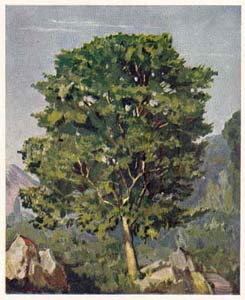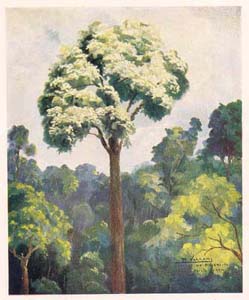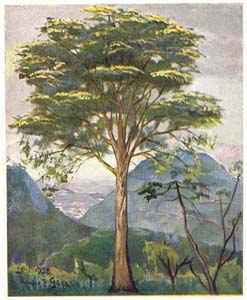CAESALPINA
ECHINATA Lamb.
(Leg. Caes.)
Nome
vulgar: PAU BRASIL
Common
name: PAU BRASIL, IBIRI PITANGA, YMIRA’ PIRANGA. BRAZILWOOD,
PERNAMBUCO, BAHIA-WOOD, PEACHWOOD (trade).
Observações: O “pau Brasil”, como sabemos,
está ligado aos primordios da historia da nossa Patria. Abundante
em varios pontos do litoral, principalmente no trecho fluminense – baíano-pernambucano,
na época do descobrimento e da colonização, está
hoje quasi extinto. É que sua madeira côr de braza, de grande
interesse comercial, provocou, em sua época verdadeira luta entre
exploradores da nova terra. Nos últimos anos os serviços
oficiais têm fomentado, com eficiência, a cultura sistematica
da árvore, formando bélos bosques em diferentes pontos do
país. Presta-se à arborização urbana em geral.
Ainda se encontram exemplares primitivos nas matas do Distrito Federal,
assinalando-se varios outros plantados pelo Barão de Capanema na
Estrada da Tijuca.
|
 |
Floração:
Floresce nos meses de Outubro e Novembro, e suas flores exalam
suave perfume.
The
“pau Brasil” is linked to the early history of the country. At the time
of the discovery and colonization of Brazil, it was frequently found in
large extensions of the coast from Rio de Janeiro to Pernambuco; now it
is almost extinct, as it was greatly exploited by the colonists. Its red
wood is of great commercial interest. During the last few years government
officers have started the planting of this tree, and there are now several
beautiful stands of this species in the country. There are some specimens
in the woods of the Federal District, and others, planted by the Barão
de Capanema, along the Tijuca Road. Flowers in October – November; its
blossoms have a faint fragrance. |


